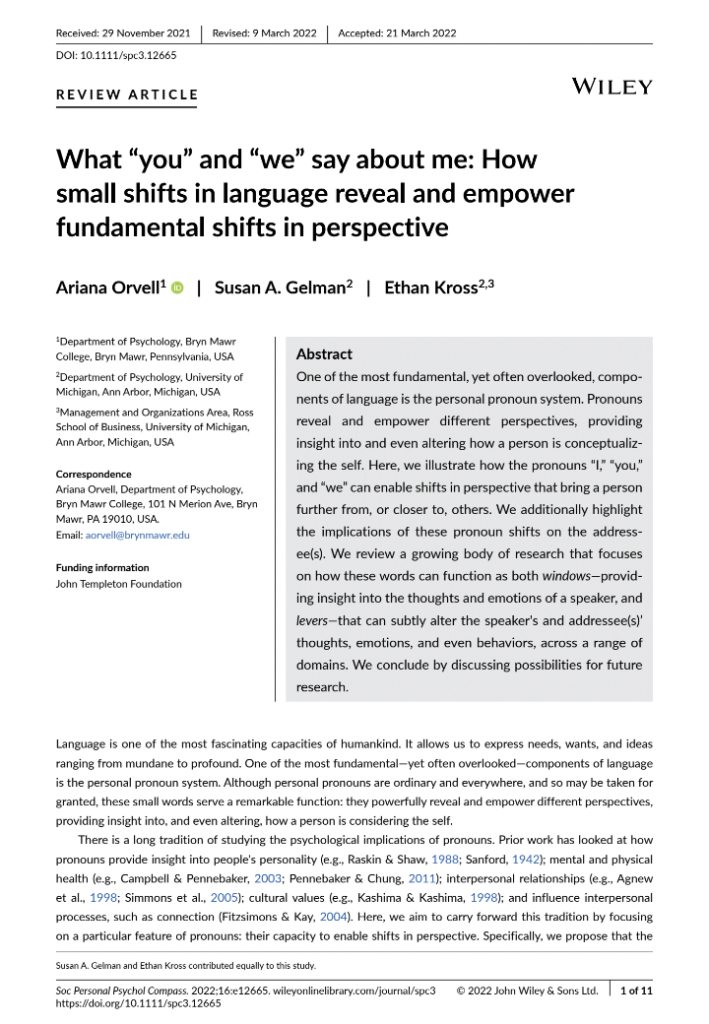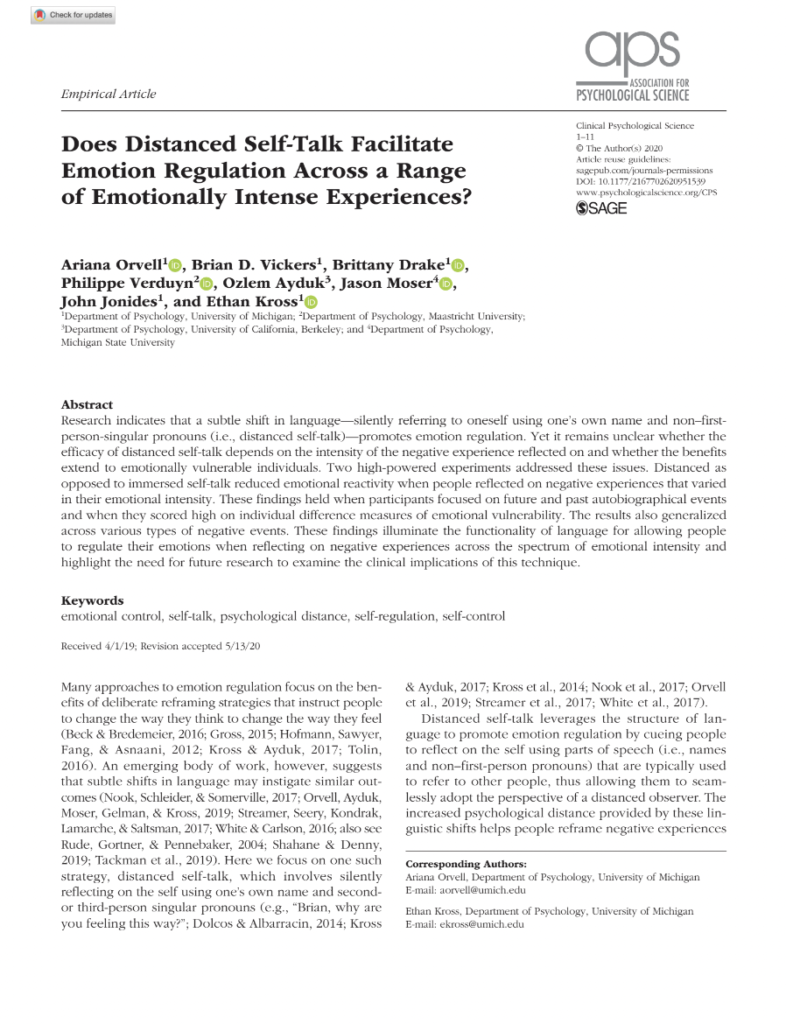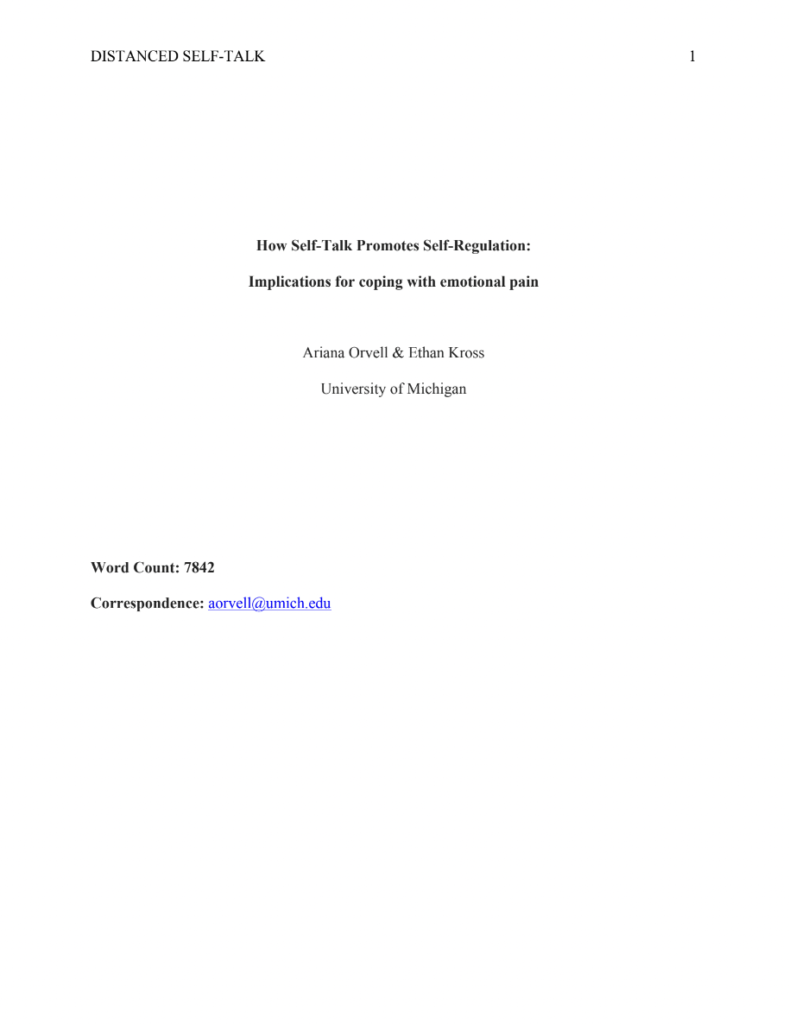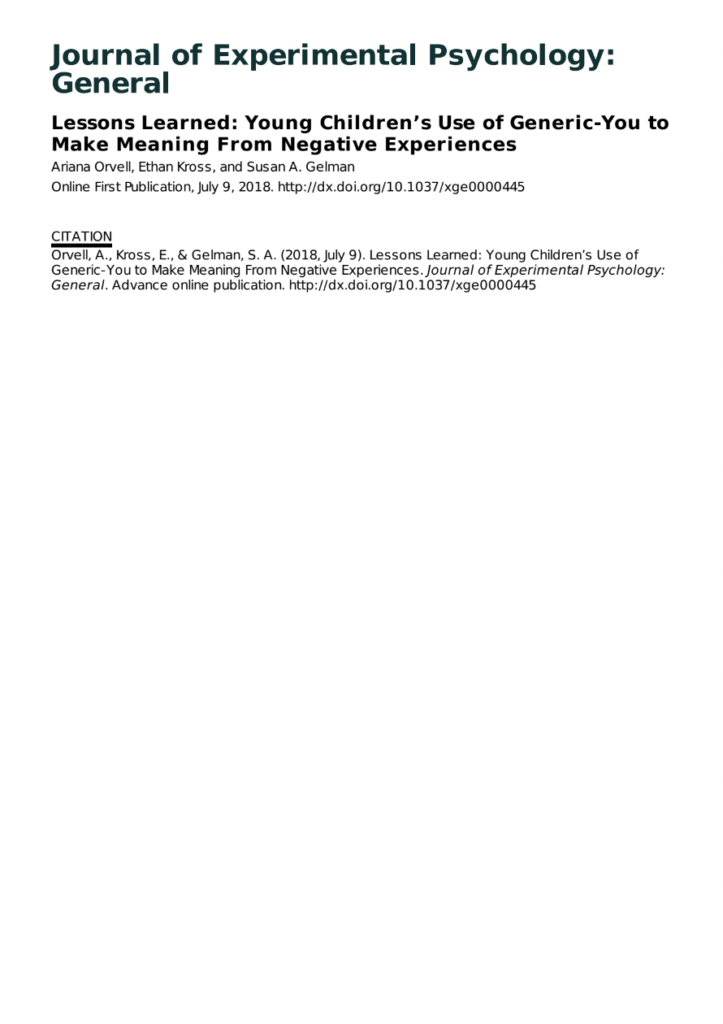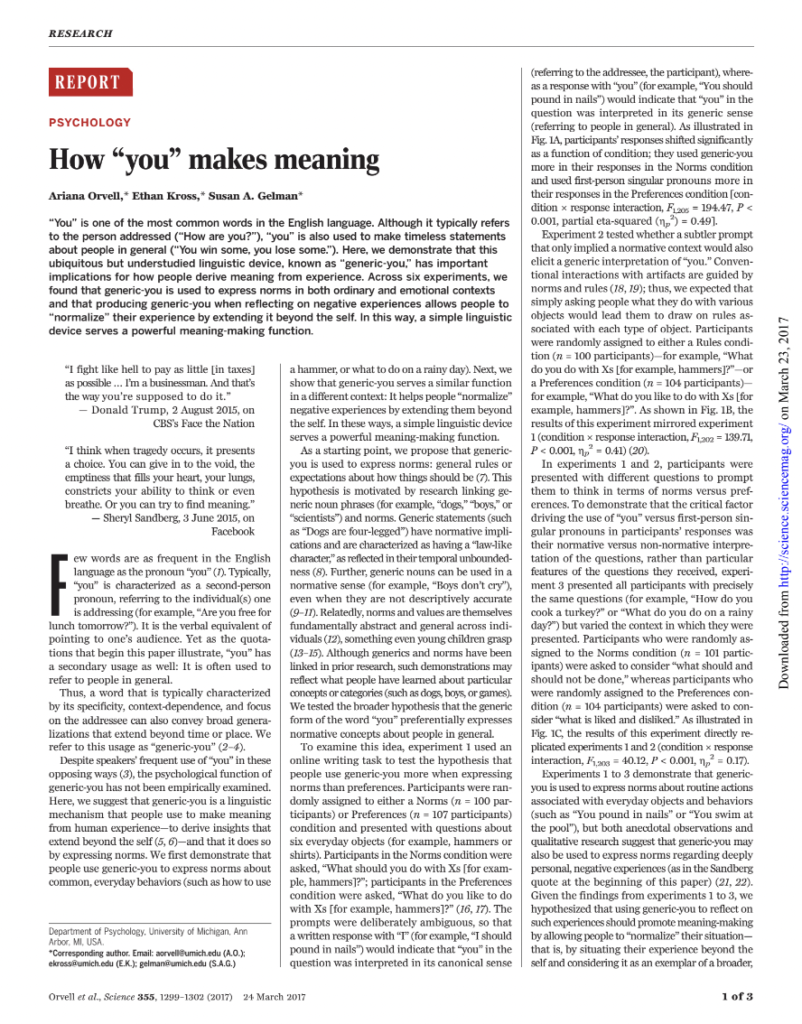What are the basic mechanisms that allow people to regulate their thoughts, feelings and behaviors?
Emotion regulation has largely been conceptualized as a deliberate process that requires effort. In my research, I have focused on how the structure of language itself may support emotion regulation, by allowing individuals to shift from their default, immersed perspective to a more distanced one.
For example, with my collaborators, I have studied ways in which people can shift the words they use to reflect on the self:
- Using “you” to address themselves directly (“Ariana, you can do better next time”); or
- Using “you” to refer to people in general, even as they reflect on their own, deeply personal experiences (“You win some, you lose some”).
Both of these shifts enhance psychological distance in different ways:
- The first allows people to take a step back by addressing themselves as if they were someone else.
- The second allows people to broaden their perspective by casting their own experience as emblematic of a broader, more universal phenomenon.
In both instances, this distance helps people think differently about their negative experiences, and feel less negatively about them.
This research has two broad implications:
- People intuitively use these linguistic shifts when faced with the need to regulate their thoughts, feelings or behaviors – providing researchers with a window into people’s emotion regulatory processes.
- These shifts can be used as levers to actively promote people’s ability to regulate their negative emotions.
Papers:
